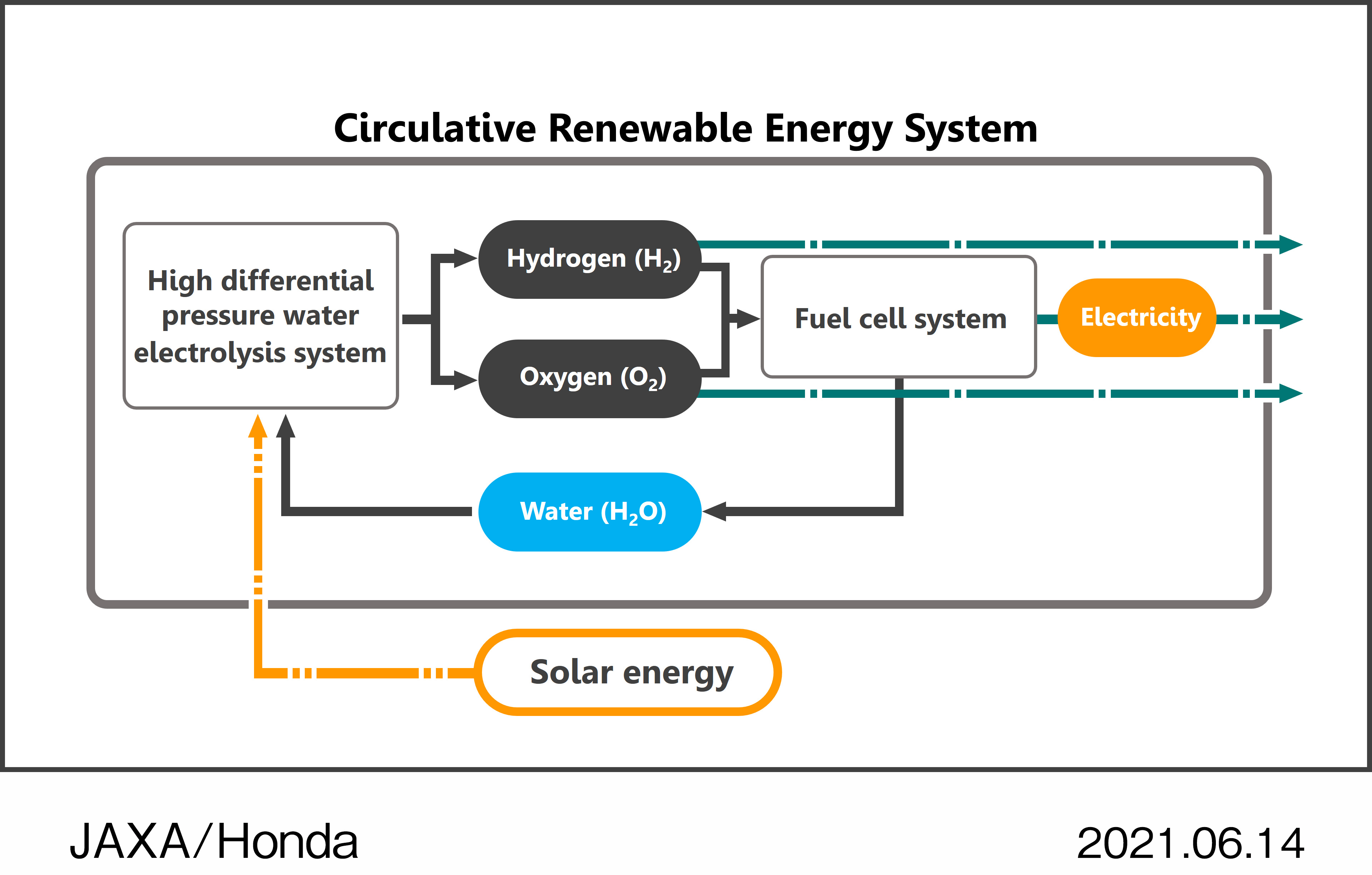ad_1]
Honda Motor Firm introduced plans to innovate in new enterprise areas like electrical vertical take-off and touchdown plane (eVTOL), bipedal robots and house know-how.
Honda R&D Co., Honda Motor Firm’s (HMC) improvements arm, will probably be main the hassle on “outside-the-box analysis on applied sciences that may result in new worth for individuals by increasing the potential of mobility into the third dimension, then the fourth dimension which defies the constraints of time and house, and in the end into outer house,” in response to the corporate.
It sounds just like the stuff of a sci-fi novel, and certainly a few of these improvements won’t find yourself panning out in the long run, however throughout Thursday’s briefing, the corporate demonstrated how its core applied sciences developed over the previous 73 years – like combustion, electrification, management and robotics – might evolve to swimsuit the aim of a future world with vastly totally different mobility wants.
Hybrid eVTOLs and a corresponding mobility ecosystem

Picture Credit: Honda Motor Firm
The distinction between an eVTOL and a helicopter is especially that the previous has a number of propellers, every of which have an impartial motor pushed by electrical energy from a battery, whereas the latter has one giant, and loud, rotor on the prime. In consequence, eVTOLs are usually anticipated to be safer, quieter and cleaner.
Whereas many of the eVTOL being developed all over the world are all-electric, HMC goals to “leverage its electrification applied sciences and develop Honda eVTOL geared up with a fuel turbine hybrid energy unit,” in response to an announcement from the corporate. The corporate first introduced its intentions to develop applied sciences on this house throughout a press conference in April, during which HMC additionally acknowledged its targets to promote 100% EVs by 2050.
Marcos Frommer, supervisor of company communications at HMC, defined throughout the press briefing that all-electric eVTOLs have a really quick vary as a result of battery capability per mass, which implies most use circumstances for these new autos will probably be restricted to quick distance flights, equivalent to intercity transportation and shuttle flights. Even Joby Aviation, which just lately introduced plans to commercialize by 2024, solely recently completed the longest test flight of an eVTOL to date, and that was about 150 miles on a single cost.
“In accordance with the outcomes of our market analysis, the biggest demand for mobility by eVTOL plane is for longer distance equivalent to intercity transportation with a spread as much as 250 miles,” stated Frommer. “Due partly to the electrification of our cars Honda is placing its effort in analysis and improvement of lithium-ion batteries. Nevertheless, development based mostly on the present lithium-ion battery is predicted to extend the vitality density per capability by solely about a number of occasions within the subsequent 20 years. So we consider that for mobility within the skies, which requires additional weight discount, it’s tough to realize lengthy distance utilizing batteries solely.”
Frommer stated if batteries advance extra sooner or later, HMC can select to make its eVTOLs all-electric by eradicating the fuel turbine generator.

Honda Introduces Initiatives in New Areas, Taking over Challenges in New Areas whereas Leveraging Its Core Applied sciences
The corporate says it needs to create a brand new “mobility ecosystem” that options eVTOL at its core and is related to mobility merchandise on the bottom. Per the animated instance HMC confirmed throughout the briefing, a enterprise government dwelling in Cape Cod may be capable of use a single app to e book a hybrid eVTOL to take him to his workplace in New York Metropolis, which might be a mere two hour commute by air. The app may be related to his private autonomous Honda car, which might chat to him concerning the climate because it drove him to a mobility hub for takeoff. When he landed an autonomous shuttle can be there ready within the Massive Apple to take him to his workplace. After a day of simple commuting, he’d be residence in meal time on the veranda along with his household.
“By using the Mannequin Based mostly Methods Engineering, or MBSE, technique, this will probably be a problem Honda will tackle to remodel ourselves from a standard manufacturing firm to a brand new firm that may also design and commercialize techniques and providers,” stated Frommer. “We will ship new worth to our clients solely after we full one massive system consisting of assorted parts, together with a reservation system infrastructure, air visitors management, flight operation and current mobility merchandise equivalent to cars. It’s inconceivable for Honda to deal with all of those parts alone and we might want to collaborate with many firms and authorities businesses.”
HMC plans to conduct know-how verification with prototypes in 2023, and conduct flight assessments of a hybrid demonstration mannequin in 2025. It’ll then decide on commercialization. If HMC decides to maneuver ahead, it hopes to acquire certifications by 2030 so it could launch within the following decade. The corporate informed TechCrunch if it reaches commercialization, clients can count on costs for eVTOLs, which might greater than seat 4 passengers at a time, to be decrease than enterprise class on business passenger planes.
Particulars about potential commercialization are nonetheless being mentioned, nonetheless, we’re striving to allow all clients to make use of our eVTOL plane at costs decrease than the costs of flying enterprise class on a business passenger airplane. Frommer stated HMC expects eVTOL to be the norm by 2040 and has forecasted a market dimension of about $269 billion by then.
Transcend time and house with the Honda Asimo robotic
Honda avatar robotic rendering permits a health care provider to remotely assist a struggling affected person.
Honda’s avatar robotic idea, Asimo, would permit the person to have a second self that performs duties and experiences issues with out being there in individual. Customers join and remotely management the avatar by carrying a VR headset and a tactile glove that may in the end be capable of mirror exact hand actions.
“We place this as 4 dimensional mobility, which transcends time and house going past 2D and 3D mobility,” stated Frommer.
The corporate envisions Asimo robots getting used for functions like distant surgical procedure, which is able to seemingly be very fashionable in creating nations that don’t have entry to world-class surgeons sooner or later, or house exploration, enabling an avatar model of an individual to go to locations which can be uninhabitable or tough to succeed in by people.
“What is going to turn out to be the core of the conclusion of such an avatar robotic is the multi-fingered robotic hand developed whereas leveraging Honda’ strengths in robotics applied sciences and Honda’s authentic AI-supported distant management perform,” in response to the corporate. “Subsequently, Honda strived for an avatar robotic that’s able to utilizing its multi-fingered hand to make full use of instruments designed for human use and performs advanced duties shortly and precisely based mostly on the AI-supported and extra intuitive management by the person.”
Toyota additionally has an analogous bipedal avatar robotic managed by telepresence referred to as the T-HR3, and Tesla just lately unveiled its plans for a humanoid robot, though the Tesla bot doesn’t seem like based mostly on distant managed know-how. If Honda goes by with its plans for Asimo, it stands to motive that it will use teleoperation each for simpler manipulation and robotic studying. Exhibiting a robotic the way to do one thing might simply be one of the best ways to coach it.
Honda says it needs to place Asimo into sensible use within the 2030s and is hoping to conduct testing earlier than the tip of the fiscal yr ending March 31, 2024.
We’re launching a robotics publication! Please join to get Actuator in your inbox as quickly as the primary problem hits! Free of charge!
Ramping up house know-how analysis and improvement

Circulative Renewable Vitality System
Honda additionally introduced plans to speed up R&D within the area of house know-how, particularly in lunar improvement. One theme Honda touched on briefly was its beforehand introduced circulative renewable vitality system. In June, Honda R&D Co. and the Japan Aerospace Exploration Agency announced a joint feasibility study on the system, which is designed to produce oxygen, hydrogen and electrical energy for human outposts and rovers on the moon so that folks can reside in house over an prolonged time frame. The system would leverage Honda’s current gasoline cell applied sciences and excessive differential strain water electrolysis applied sciences, in response to the corporate.
Honda additionally mentioned utilizing remote-controlled robots on the lunar floor to attenuate the dangers related to astronauts being blasted into house and to even permit individuals to nearly discover the Moon from Earth. The moon robotic would come with the identical multi-fingered hand know-how and AI-supported distant management know-how that’s being developed for the avatar robotic, in addition to torque management know-how that Honda makes use of for collision mitigation.
The automaker additionally hopes to make use of its core applied sciences in fluid and combustion in addition to steerage and management to construct reusable rockets.
“If we are able to use such rockets to launch small low orbit satellites, we are able to count on to evolve our core applied sciences into varied providers, together with related providers,” stated Frommer. “All such providers will probably be suitable with Honda know-how.”
Frommer stated Honda gave its “younger engineers” with goals of constructing a rocket the go forward on the finish of 2019 to start R&D. Honda didn’t present any additional specifics about both of its house initiatives.










